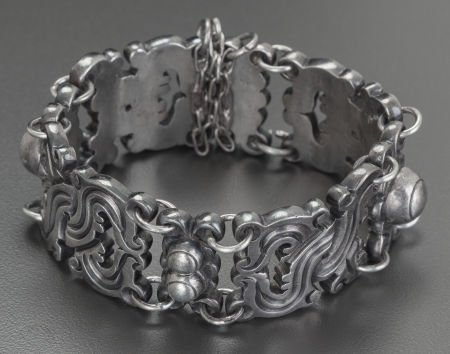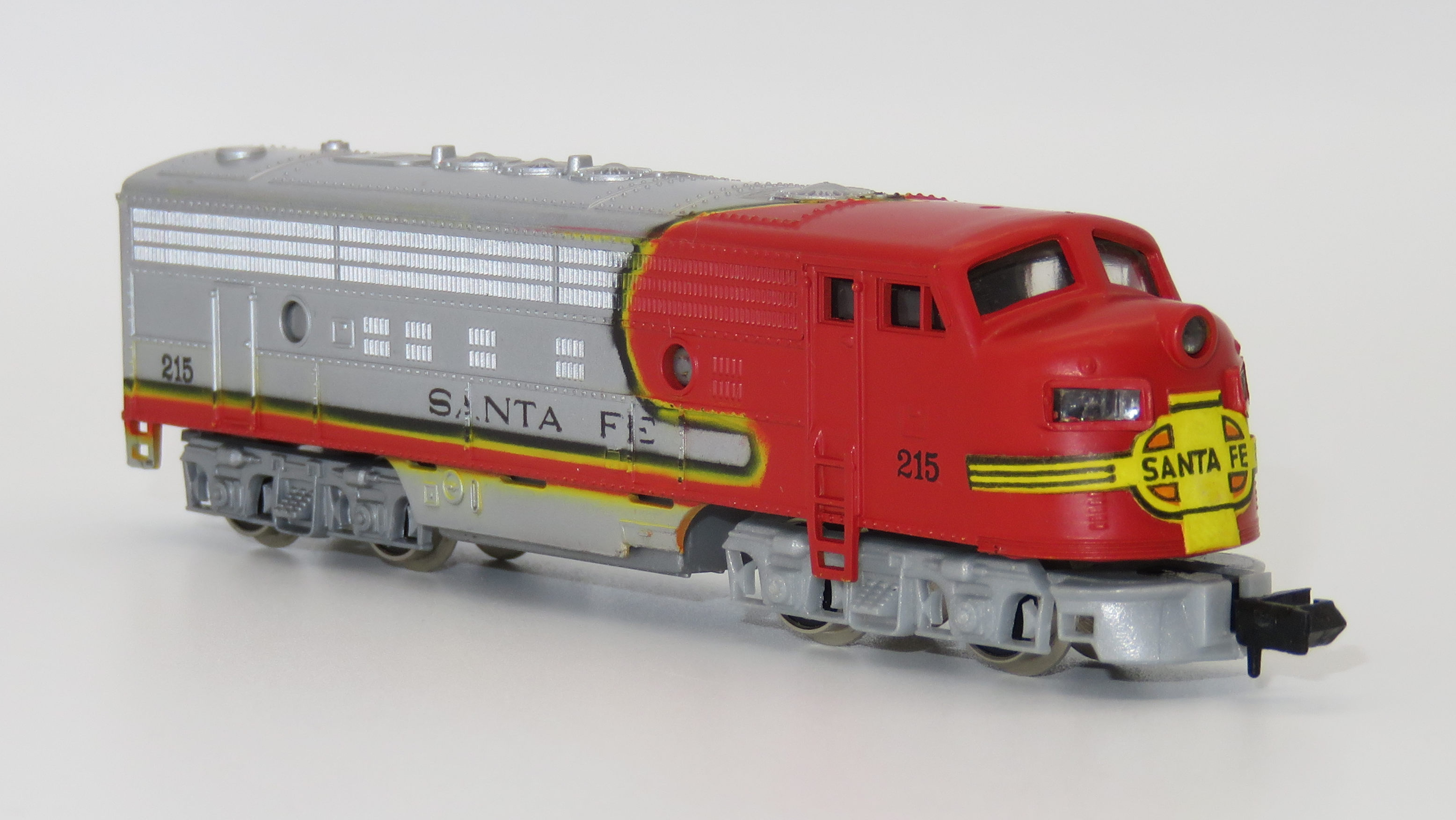Description: Counted as the most beautiful and detailed of Mixtec hand-painted books, the 16th century Codex Vindobonesis depicts mysterious Pre-Columbian deities, exotic animals, birds, flowering plants and lavish temple architecture. These exuberant and flowing forms inspired Spratling’s ornately beautiful bracelet of the same name. A featured piece in Morrill & Berk’s ‘Mexican Silver’ (Plate 111-30), this important piece shows Spratling’s uncompromising dedication to design, construction, and craftsmanship. Each intricately carved curving link draws the eye along the graceful flow encircling the wrist. Single and double applied half domes, set in high relief against narrow panels heavily darkened with age, alternate to add visual expansion, allowing glimpses of skin beneath. Curved and pierced finials on each link integrate the connecting jump rings along the edges of the design, introducing movement and emphasizing the interplay of light and shadow. Spratling bracelets are weighty, solid in construction, highly collectible and timeless in appeal. This bracelet, of high grade 980 silver and marked in two places with the mid-1940’s Spratling Print Circle, exemplifies Spratling’s excellence in design and execution and looks absolutely stunning on the wrist. 8-1/2 inches long (21.6 cm) 4.50 troy ounces The bracelet with alternating bracket links, secured by chain and pin
Biography: William Spratling was born in 1900 in Sonyea, New York. In 1917 William Spratling attended Auburn University and a year or two later, during his stay at Auburn served as an instructor in architecture. Spratling moved to New Orleans in 1921 where he was an Associate Professor of Architecture at Tulane University.
Spratling visited Mexico for the first time in 1926. He returned for summers over the next several years, and in 1929, moved to Mexico. In 1931, Spratling hired an experienced goldsmith from Iguala who moved to Taxco and created silver jewelry of Spratling’s design. Other craftsmen joined Spratling’s shop and produced tin ware, copper items, textiles and furniture - all designed by Spratling.
Early in 1946, Spratling y Artesanos was out of business due to mismanagement by Spratling’s partners. Spratling left Taxco and moved to his ranch, never returning to Taxco to live. From then on, Spratling rebuilt his business and had silversmiths fabricating his jewelry and object designs at his ranch. His designs were also produced by the Conquistador Company in Mexico City for a couple of years.
William Spratling was killed on August 7, 1967 in an automobile accident just outside Taxco. Throughout Mexico he is acknowledged as "The Father of Mexican Silver."
Spratling visited Mexico for the first time in 1926. He returned for summers over the next several years, and in 1929, moved to Mexico. In 1931, Spratling hired an experienced goldsmith from Iguala who moved to Taxco and created silver jewelry of Spratling’s design. Other craftsmen joined Spratling’s shop and produced tin ware, copper items, textiles and furniture - all designed by Spratling.
Early in 1946, Spratling y Artesanos was out of business due to mismanagement by Spratling’s partners. Spratling left Taxco and moved to his ranch, never returning to Taxco to live. From then on, Spratling rebuilt his business and had silversmiths fabricating his jewelry and object designs at his ranch. His designs were also produced by the Conquistador Company in Mexico City for a couple of years.
William Spratling was killed on August 7, 1967 in an automobile accident just outside Taxco. Throughout Mexico he is acknowledged as "The Father of Mexican Silver."
Item created by: gdm on 2015-06-16 05:53:20. Last edited by Emily on 2015-07-15 14:01:11
If you see errors or missing data in this entry, please feel free to log in and edit it. Anyone with a Gmail account can log in instantly.
If you see errors or missing data in this entry, please feel free to log in and edit it. Anyone with a Gmail account can log in instantly.







